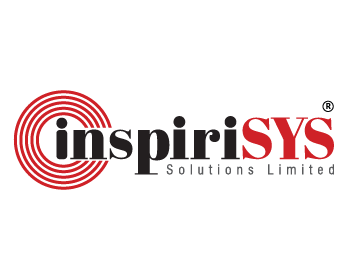What is a Container?
A container is a software package that includes everything needed—code, runtime, configurations, and system libraries—allowing it to operate consistently across different host systems. Container-as-a-Service (CaaS) allows development teams to quickly deploy and scale containerized applications across high-availability cloud environments. Unlike Platform-as-a-Service (PaaS), which focuses on specific language stacks like Ruby on Rails or Node.js, CaaS supports the deployment of multiple stacks within each container, offering greater flexibility.
What is Containers-as-a-Service (CaaS)?
Containers-as-a-Service is a cloud-based solution that simplifies the management, scaling, and operations of containers for development teams. This managed service, provided by leading cloud platforms such as AWS, Azure, Google Cloud Platform (GCP), and IBM, enables teams to handle containers through various interfaces like Application Programming Interfaces (APIs), Command-Line Tools (CLIs), or Web Portals.
Key Takeaways
- Containers create isolated environments that package an application with its dependencies, offering a more lightweight alternative to virtualizing an entire machine.
- Container clusters manage and organize containers, grouping them into pods that run efficiently across different nodes.
- Containers allow developers to monitor and control individual services, ensuring they meet performance and security standards.
In the past, engineering teams had to manually configure and manage cloud infrastructure, including virtual machines and network configurations, to run containerized applications. While manageable on a smaller scale, as applications grow and become more complex, this process demands the attention of a dedicated DevOps team.
As a result, teams can focus on the core development process, driving faster product releases, supporting agile methodologies, and ultimately delivering more value to their customers.
Why CaaS is Important?
By improving the handling and operation of containers, CaaS provides a highly scalable solution for developers. IT teams can leverage CaaS to install containers with enhanced control and security, streamlining the overall management of containers within a software-defined infrastructure.
Positioned between Infrastructure-as-a-Service (IaaS) and Platform-as-a-Service (PaaS), CaaS primarily uses containers instead of virtual machines or physical servers typically found in IaaS environments.
A defining aspect of CaaS is its orchestration capability, which automates essential IT processes. Popular orchestration tools, such as Kubernetes and Docker Swarm, are commonly used in CaaS environments, making it a preferred choice for businesses across various sectors seeking efficiency and scalability. The use of containers improves operational efficiency, accelerates software implementation, and enhances portability across hybrid and multi-cloud environments. Additionally, containerization helps companies reduce infrastructure and licensing costs, along with operational expenses.
How Does CaaS Work?
CaaS platforms offer a streamlined approach to the deployment, scaling, and management of containers by utilizing orchestration tools such as Kubernetes or Docker Swarm. Container images can be uploaded and stored in a central repository, such as Docker Hub or Amazon ECR. During deployment, various settings can be configured, including the desired number of replicas and resource limits. The orchestration tool manages the deployment, ensuring that resources are allocated appropriately. Once the application is operational, the CaaS platform continuously monitors container performance and provides management and troubleshooting tools.
What is a Container Cluster?
In the context of Containers-as-a-Service, a container cluster is an organized system that manages multiple containers across several nodes. These containers are grouped into pods, which serve as the basic operational units, facilitating smooth application handling. One of the core elements of container clusters is dynamic container placement, which is enabled through a process called cluster scheduling. This system intelligently allocates containerized workloads to the most suitable virtual or physical machines based on available resources such as CPU and storage. It automates workload distribution, reschedules tasks during failures, and scales the cluster as needed to ensure efficiency and prevent disruptions.
Rather than managing containers individually, organizations using CaaS often handle them as sets within pods. This allows containers that need to operate together to be co-scheduled on the same node, ensuring consistent execution. Effective communication between nodes is crucial, especially when applications are built on microservices architecture, where each service runs in its own container. Nodes share important data, such as their status and available resources, to enable seamless redistribution of workloads in case of failure, ensuring uninterrupted application performance and high availability.
Benefits of Adopting Containers-as-a-Service (CaaS)
Organizations that adopt CaaS can experience a range of benefits, particularly in leveraging containerization for modern application development:
-
Increased Agility: CaaS empowers developers to quickly launch and update applications, significantly reducing the time to market and supporting rapid innovation cycles.
-
Scalability and Flexibility: CaaS enables applications to scale effortlessly according to demand, ensuring optimal performance while maintaining cost-efficiency.
-
Reduced Infrastructure Management: By handling the underlying infrastructure, CaaS frees development and IT teams from managing servers, storage, and networking, enabling them to concentrate on application development.
-
Improved Resource Utilization: CaaS promotes higher density usage and better resource optimization compared to traditional virtual machines, leading to reduced infrastructure costs.
-
Portability and Consistency: Containers provide a uniform runtime environment across different platforms and cloud services, facilitating easy migration and preventing vendor lock-in.
Key Terms
Container Cluster
A system that manages multiple containers across nodes, enabling efficient handling and scaling of containerized workloads.
Pod
A group of containers that run together on the same host, ensuring synchronized execution and communication.
Physical Servers
Physical servers used in Infrastructure-as-a-Service (IaaS) that provide direct hardware access, without virtualization layers.
Load Balancing
A process that distributes workloads evenly across multiple servers or resources to ensure optimal performance and reliability.





